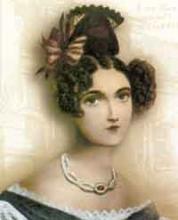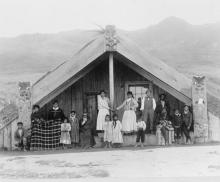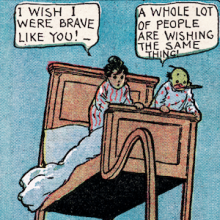Browse Primary Sources
Locate primary sources, including images, objects, media, and texts. Annotations by scholars contextualize sources.
Denunciation of a Woman Participant in the Uprising of May 1795
Once the uprising of May 1795 had been suppressed, the government set up a military tribunal, which gathered denunciations of presumed rioters. This one gives a good sense of the charges made and the kind of language used ("infernal sect of Jacobin terrorists, blood–drinkers, etc.").
Police Reports on Women’s Discontent (Spring 1795)
Agitation over the shortage of bread reached a breaking point in the spring of 1795. Women played critical roles in these disturbances, as they had before the Revolution.
An Ordinary Woman Faces Prison for her Comments
This petition from the wife of a wigmaker in Paris demonstrates both the volatility of the political situation (she went to jail for badmouthing a local official while standing in line at a food market) and the conditions in prison.
How a Mother Survives
Madame Ducroquet wrote to her son in the spring of 1794 about the continuing shortage of food. She expressed her worries upon reading that someone with the same name had been arrested; in fact, it was her son, who went to the guillotine only a few weeks later.
Chaumette, Speech at City Hall Denouncing Women’s Political Activism (17 November 1793)
When a group of women appeared at City Hall wearing red liberty caps, Pierre–Gaspard Chaumette denounced them and all political activism by women. He held out the examples of Madame Roland and Olympe de Gouges as warnings.
The Trial of Olympe de Gouges
The case against Olympe de Gouges is worth reading in detail because it is typical of the attacks on those who criticized the authority of the central government that gathered force in the fall of 1793 and continued up to July 1794, when Robespierre fell from power. Gouges, an advocate of increased popular consultation, criticized the National Convention, calling its members ambitious men.
Discussion of Women’s Political Clubs—Amar
In a follow–up to Fabre d’Eglantine’s speech on 29 October, Jean–Baptiste Amar proposed an official decree on 3 October forbidding women to join together in political associations. A deputy tried to argue that this notion ran contrary to the right of freedom of association, but he was shouted down by the other deputies.
Guyomar, "The Partisan of Political Equality between Individuals" (April 1793)
Pierre Guyomar wrote the pamphlet excerpted here during the war–torn and hungry spring of 1793, at the height of popular political mobilization that restated arguments made by Condorcet three years earlier. A political moderate, Guyomar supported equal political rights for women and compares the question of women’s rights to that of the rights of black slaves.
Discussion of Citizenship under the Proposed New Constitution (29 April 1793)
In the discussion of a new constitution in April 1793, Jean–Denis Lanjuinais spoke for the constitutional committee. He admitted that the question of women’s rights had aroused controversy.
Prudhomme, "On the Influence of the Revolution on Women" (12 February 1791)
Louis–Marie Prudhomme founded the Révolutions of Paris, one of the best–known radical newspapers of the French Revolution. In this editorial, he responds to women’s criticisms of the Revolution and outlines a theory of women’s "natural" domesticity. He stopped publication of his paper in 1794 in response to the growing violence of the Terror.
Account of a Session of the Society of Revolutionary Republican Women
Unfortunately the only first-hand account of the meetings of the women’s club comes from notes taken by Pierre–Joseph–Alexis Roussel, published in a volume of memoirs in 1802. His account makes fun of the women’s club for discussing the virtues of women as warriors and administrators. Some of the details, however, are accurate and give credibility to the overall account.
Regulations of the Society of Revolutionary Republican Women (9 July 1793)
The regulations demonstrate that women wanted to be taken seriously as political participants; they wanted their club to be like the clubs set up by men.
Police Reports on Disturbances over Food Supplies (February 1793)
The reports of the Paris police provide firsthand information about conditions in the city and about the leading role of women in food disturbances.
A Deputation of Women Citizens Demands Action on Food Prices (24 February 1793)
In the rioting over prices of February 1793, women appealed first to the authorities, showing that they intended to communicate directly with their representatives in the municipal government of Paris. By explicitly referring to themselves as "citizens," these women publicly claimed their right to be heard.
Women’s Participation in Riots over the Price of Sugar, February 1792
This fragment from a memoir by Charles Alexandre shows the anger of women when confronted by a sugar shortage. They readily attributed the shortage to hoarding by greedy merchants. This document also shows the new importance of colonial products such as sugar and coffee.

Camila O'Gorman
The story of Camila O'Gorman (1828-1848), the daughter of a prominent merchant in the Buenos Aires community, is one of the most famous cases of a young person challenging both parental and state authority. In 1847, at the height of Rosas's power, 19-year-old Camila and Ladislao Gutiérrez, a young Catholic priest from Tucumán, fell in love.

New Zealand, Maoris at Their Talking House
The photograph shows Maori men, women, and children arranged for a group portrait on the porch of a whare or wharenui (meeting house) in New Zealand. This ceremonial structure, also called a talking house, and the marae (grassy area in front of it) are central to Maori social order and culture.
Childhood Obesity in the United States
The map, issued by the Center for Disease Control (CDC), shows the percentages of substantially overweight, or obese, low-income children by county and in territories and tribal organizations where Native Americans live. The problem extends to both urban and rural populations.

Little Nemo in Slumberland
A young boy slumbers in his bed, ensconced in a non-descript, middle class bedroom. He is jarred awake to find his bed floating out his window and into space. So begins an episode of Winsor McCay's epic series, Little Nemo in Slumberland, which ran in American newspapers from 1905 until 1914.
Arab Countries Youth Population Projection
The 2009 United Nations Arab Human Development Report describes a "youth bulge" as a high proportion of 15-29 year olds relative to the adult population. Young people are the fastest growing segment in Arab countries, with youth under 25 years of age comprising about 60% of the current population.